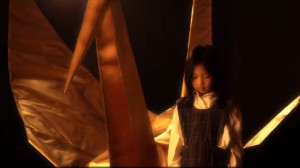Roald Dahl had anything but a boring life. I would say he followed his dreams. He told stories that have been loved by children all over the world, like Charlie and the Chocolate Factory and Matilda. He wrote the screenplay for a James Bond movie, Chitty Chitty Bang Bang and other movies. During World War II he was a fighter pilot and sent intelligence to the spy agency MI6. He died in 1990 from MDS when he was 74. MDS is short for myelodysplastic syndromes, which are a rare group of related diseases in which the blood doesn’t function properly.
Today, the 14th of July, is the third National MDS Day in Australia. A year ago I wrote about Carl Sagan and MDS. Sagan was a very well-known scientist who took quite an interest in his disease, and we can hear him speak about his illness and his fight with it in the media (there’s a link to an interview at the end of this post).
But there’s not much detail, on the internet at least. about Dahl’s illness. One biography just says he went into hospital with an unknown infection in November 1990 and died 11 days later. (Interestingly for me this was the John Radcliffe Hospital in Oxford, UK, and I was working there at the time.) Twenty percent of MDS patients do have infections that are serious enough to need a hospital stay, in fact that’s what finally killed Sagan too.
Organisers of a charity event for MDS in the UK this year took the trouble to explain what MDS is in their advertising material. MDS has a public image problem – almost no public image that is.
- “Unfortunately (!) the only ‘celebrities’ that have had MDS are all dead (Carl Sagan, Roald Dahl, Susan Sonntag) – if we had a few living ones then maybe this would be a disease with more public profile and hence money for research.”
Myelodysplastic syndromes (MDS for short) can be mild, severe, or anything in between. About a third of people with MDS will get leukaemia (acute myeloid leukaemia or AML).
I’d like to think Mr Dahl would have made a good scientist. Apparently his mother wanted to pay for him to get a good university education but he passed up the offer because he would rather go exploring. He also had a wildly creative imagination, which is always good for investigating things. Indeed, whe did help invent a medical device – the Wade-Dahl-Till valve – that was used to save children with brain injury.
Roald Dahl knew about the importance of vaccination first-hand. His daughter Olivia died from Measles when she was seven. He wrote a passionate letter pleading with parents to get their children vaccinated.
His widow Felicity set up the Roald Dahl Foundation, which is now known as the Marvellous Children’s Charity. It continues the work he started, helping seriously sick children. I think the Marvellous Mr Dahl would have approved.
SOME LINKS
More about MDS
Carl Sagan talking about his illness:
The Leukaemia Foundation of Australia has information for patients and carers, and supports research in Australia.
There’s also the MDS Beacon, the MDS Foundation, and information available through several other leukaemia and health-related organisations on the net.
More about Roald Dahl
Official website: http://roalddahl.com/
https://en.wikipedia.org/wiki/Roald_Dahl
Biographies





